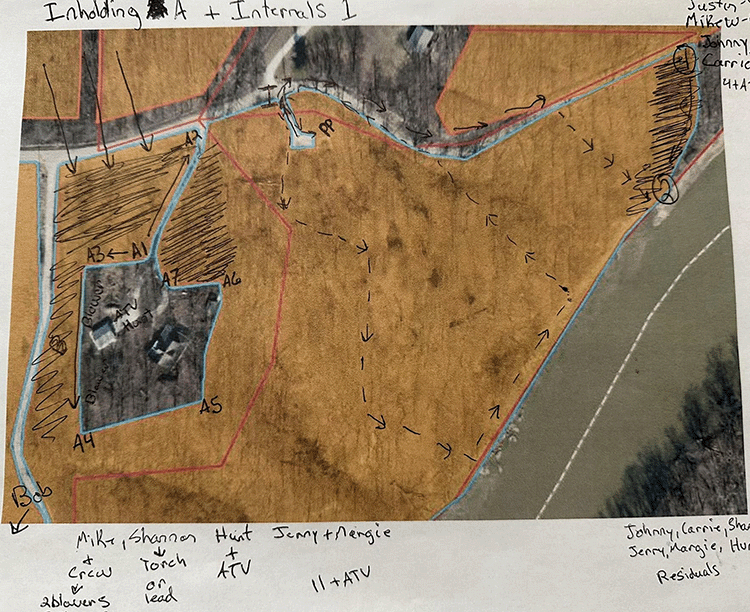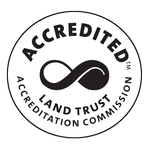News
A Burn Narrative - Bob Easter
Burn unit BR 4 located in the Black Rock area contains about 72 total acres that are part of our prescribed burn rotation. Of those acres, about 18 are owned by NICHES and the rest by our neighbors.
Preparation of the fire breaks for this unit began last fall with mowing prairie vegetation along the edges of the burn area. Though we’ve been waiting for proper burn conditions since November, we didn’t get them until March 1st. Watching the weather, we saw the right combination of wind speed and direction, temperature, humidity, and fuel conditions. When these conditions were finally met, we touched up fire breaks and prepared for the burn.
The burn crew for this unit included 4 NICHES staff, volunteers, neighbors, partners (including 4 DNR Division of Nature Preserves employees), 1 steward from Central Indiana Land Trust, 2 Purdue staff/faculty, and 3 Purdue students.
As the burn crew began their trek to the meeting point…it started snowing. At first, just a little. Then, like it was Christmas morning. I was hoping it would pass quickly and we could proceed as planned, but it looked grim with snow accumulating on the roadsides. We worried we may have to regroup and look for the next best day.
Not wanting to call off the burn, we lit a test fire that reluctantly spread but did not go out. This was a great sign; the snow on top of the dry fuel was not stifling the fire. I decided not to call off the burn. We completed our final preparation and split into three ignition and holding crews. The crews blackened out the perimeter and ensured the safety of nearby structures.
With all secure, we allowed strip-head (1) fires to settle into flanking fires (2) to burn towards the river, and a backing fire (3) to pull away to the north through the prairie fuels. Eventually, we lit a second flanking fire in the prairie to accelerate the process and finally lit the flanking fire on the west edge of the burn unit. We then patrolled the areas past the fire breaks to ensure the burn area was contained.
As the fires burned, our crew was diligent with monitoring its progress and extinguishing parts as necessary, ensuring that the surrounding area was safe. The desired burn objectives were met. The crew performed final safety checks and operations were complete. It was a great success.
(1) Strip-head fires: A series of lines of fire upwind of a firebreak that burns with the wind toward the firebreak.
(2) Flanking fires: fires that burn into the wind, but at an angle to the wind direction, generating a greater rate of spread and intensity than a backing fire but less than a head fire.
(3) Backing fires: fires that move against the wind–much slower than head or flanking fires.



